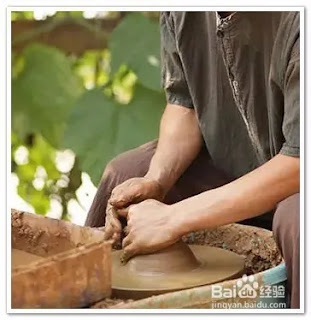Class Assignment #4 (Yiling Liu)
ancient porcelain wind-instrument
It is one of the oldest wind instruments in China, with a history of about seven thousand years. It is a unique instrument for Han Chinese and the closest instrument to religious culture among musical instruments. It occupies an important place in the history of primitive arts in the world. This musical instrument originated from a hunting tool called "Shi Liuxing". In ancient times, people tied stone or clay balls to a string and threw them to shoot birds and animals. Some of the balls were hollow in the middle and would make a sound during the throwing process. Later people found it interesting and used it to blow, so this ball-shaped thing slowly evolved into a musical instrument.
The process of making musical instruments and types
Initially, this instrument was made of stones and bones, but it gradually developed into various shapes of clay instruments, such as round or oval like a ball, and fish or pear shapes, with the pear shape being the most common. This instrument has a mouthpiece for blowing air at the top and a flat shape at the bottom with some openings on the sides that allow different tones to be played in different ways.
How it is made. Step 1: Choose a very sticky soil, soak it in a basin with water, strain it several times through a sieve, dry it, and finally rub it with your hands until it feels like the clay is no longer sticky. Step 2: Make the shape of the instrument. This is a very important point in the whole production process. If the clay is too thick, then the instrument will have a very low tone. If the instrument is made too thin, then the instrument will sound extra light. Step 3: After the shape is formed, it needs to be baked with fire. The temperature of the baking is a very important step in this process. Step 4: After cooling, the tone of the instrument needs to be adjusted repeatedly.
(How to tune it)
The impact and significance of ecological sustainability
Unlike other musical instruments. The raw material of this musical instrument is just
the soil, which is the product of the combination of climate, plants, organisms, topography, and light. These factors do not have much influence on the reproduction of other plants and animals, and soil is a substance that can be found everywhere in human life. The process of producing this instrument requires the use of fire, so this also pollutes the air and, to some extent, ecological damage. Historically, the cultural development of this instrument is linked to a long period when China was in the agricultural era. Soil was a very common and used substance in ancient times, so the type of instruments made and their cultural development were relatively fast in ancient times. From the economic point of view, this instrument does not need too expensive raw materials in its production, so this instrument is also very cheap, and in ancient times the usage rate of this instrument should be very high, while in modern times, due to the appearance of more and more kinds of instruments and the fact that everyone lives in the city for a long time, the relationship with nature does not seem to be so close, except for the need to use soil when growing plants, the rest of the time we do not have many The rest of the time we don't have many opportunities to use clay. From an aesthetic point of view, it can be kept as a decoration or a gift, because it is particularly beautiful and very portable. Also because it has thousands of years of cultural history and also has a great collector's value.
References
1 Baidu Encyclopedia, The origin of the pottery flute,
2Baidu Encyclopedia, About how to make an ocarina,







Comments
Post a Comment